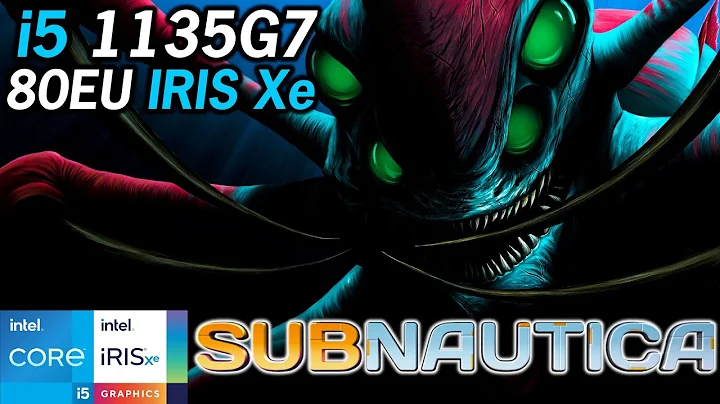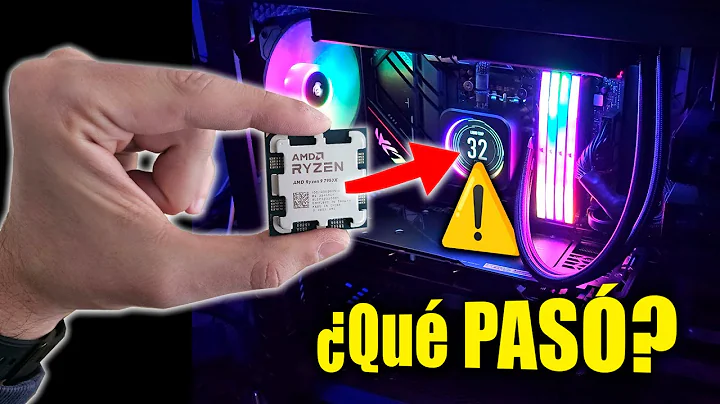Intel Arc A770 and A750 GPUs: Inconsistent, Crashing, and Overpriced
Table of Contents
- Introduction
- Intel's Entry into the GPU Market
- Initial Optimism and Expectations
- The Disappointing Performance of the Arc GPUs
- Inconsistent Performance and Mixed Reviews
- Issues with Stability, Drivers, and Games
- Focus on Optimizing Drivers for DX12 and Vulkan
- Compatibility Concerns and Backwards Compatibility
- Die Size and Performance Discrepancies
- Hardware Requirements and Resizable BAR
- The Lack of Competitive Pricing
- The Importance of Polished Drivers
- Potential Impact on the Market
- Conclusion
👉 Article: Intel's Arc GPUs: A Disappointing Entry into the GPU Market
The anticipation of Intel's entry into the discrete GPU market was met with excitement and high expectations. With the announcement that they would be taking on AMD and Nvidia's gaming GPUs, there was hope for increased competition and innovation in the market. However, as reviews started pouring in, it became clear that the reality did not live up to the initial optimism.
1. Introduction
The year was 2017 when Intel announced its plans to venture into the competitive GPU market. The company poached the head of AMD's Radeon graphics division, Raja Koduri, which further fueled excitement among computer hardware enthusiasts and tech professionals. The prospect of having a new player in the GPU space seemed promising, as it could potentially lead to improved innovation and better pricing for consumers.
2. Intel's Entry into the GPU Market
The discrete GPU market had long been dominated by two major players, AMD and Nvidia. Intel's entry into this market was seen as a positive development, as it would introduce much-needed competition. The market could greatly benefit from the presence of a third player, as increased competition often leads to better products and more affordable prices for consumers.
3. Initial Optimism and Expectations
Rumors indicated that Intel's flagship GPU would target the performance level of the RTX 3070 and RX 6700 XT. For a first attempt in the GPU gaming market, this was considered a respectable entry point, especially if Intel could offer competitive pricing. However, as time went on, the initial optimism began to diminish.
4. The Disappointing Performance of the Arc GPUs
The release of Intel's Arc A380, a card expected to perform on par with the RX 6500 XT, fell short of expectations. It only offered performance comparable to an RX 6400 XT, a whole tier lower. This left consumers reevaluating their performance expectations for Intel's flagship Arc GPU, which was now expected to perform similarly to an RTX 3060 Ti.
5. Inconsistent Performance and Mixed Reviews
One of the main concerns raised by reviewers was the inconsistency in performance exhibited by Intel's Arc GPUs. While some games showcased impressive performance, others, such as CS:GO, Rainbow Six Siege, and Valorant, experienced abysmal performance. These were popular esports titles, which highlighted the GPUs' lack of native support for DirectX 9 and reliance on translation layers, leading to increased CPU driver overhead and latency.
6. Issues with Stability, Drivers, and Games
Reviewers highlighted various issues with stability, drivers, and Game compatibility. Games were reported to crash, textures failed to load properly, and several other issues were encountered. The reviews also Mentioned weird issues with certain games, which are expected to be resolved over time through driver revisions. These issues indicated that the Arc GPUs were not ready for launch and had not been thoroughly tested before release.
7. Focus on Optimizing Drivers for DX12 and Vulkan
Intel's decision to prioritize optimizing their drivers for DirectX 12 and Vulkan APIs had mixed consequences. While it may have resulted in better performance in some modern games, it left older games, which rely on DirectX 9, with subpar performance due to the use of translation layers. This lack of backward compatibility was a significant drawback, as one of the major advantages of PC gaming is the ability to play older games on new hardware.
8. Compatibility Concerns and Backwards Compatibility
The lack of native DirectX 9 support in Intel's Arc GPUs raised compatibility concerns. The use of a translation layer from DirectX 12 added additional CPU driver overhead and latency, negatively impacting performance in older games like CS:GO. This limitation diminished the appeal of these GPUs for gamers who enjoy a range of titles, including older classics.
9. Die Size and Performance Discrepancies
One puzzling aspect of Intel's Arc GPUs was the discrepancy between their large die size of 406 millimeters square and their performance, which was comparable to GPUs with significantly smaller die sizes. Something went wrong during the development process, resulting in subpar performance relative to the hardware specifications.
10. Hardware Requirements and Resizable BAR
Intel recommended a minimum of Intel's 10th Generation or AMD's Ryzen 3000 CPUs for optimal performance with their Arc GPUs. Resizable BAR was deemed a necessity, and using the GPUs without it was compared to handicapping their performance. This added requirement further limited the consumer base who could fully utilize these GPUs.
11. The Lack of Competitive Pricing
Though Intel's Arc GPUs were priced lower than Nvidia's offerings, they were not competitively priced compared to AMD's alternatives. Given the performance and compatibility issues, potential buyers found it difficult to justify purchasing these GPUs when stable alternatives like the RX 6600 XT were available at similar or lower prices.
12. The Importance of Polished Drivers
Intel's Arc GPUs could have performed better had their drivers been as polished as Nvidia's. The raw rasterization performance showed potential for reaching higher tiers, but without proper driver optimization, this potential could not be fully realized. The lack of polished drivers was a significant drawback for consumers seeking a reliable and stable gaming experience.
13. Potential Impact on the Market
Intel's disappointing entry into the GPU market could have a significant impact on the market dynamics. If Intel continues to struggle with drivers and fails to provide proper support for older games, they risk being overlooked by consumers. This lack of competition could hinder further innovation and prevent price wars between AMD and Nvidia.
14. Conclusion
While Intel's Arc GPUs are not inherently bad cards, the issues surrounding their performance, compatibility, and drivers significantly hinder their appeal to the average gamer. For now, it is recommended to opt for AMD or Nvidia GPUs when building a reliable gaming system. Intel must address these issues promptly and demonstrate their commitment to improving the overall user experience if they hope to gain the trust and loyalty of consumers in the increasingly competitive GPU market.
Highlights
- Intel's entry into the GPU market brought anticipation and excitement.
- Expectations were high for increased competition and better prices.
- However, the performance of Intel's Arc GPUs fell short of expectations.
- Inconsistent performance and mixed reviews were major concerns.
- Issues with stability, drivers, and game compatibility were prevalent.
- Optimizing drivers for DX12 and Vulkan created compatibility challenges.
- Die size and performance discrepancies raised questions about engineering.
- Hardware requirements and reliance on resizable BAR limited consumer base.
- Lack of competitive pricing compared to AMD's offerings was a drawback.
- Polished drivers are crucial for optimal performance and user experience.
- The potential impact on the market could result in limited competition.
- Intel must address issues promptly to gain consumer trust and loyalty.
FAQ
Q: Are Intel's Arc GPUs completely unusable?
A: Intel's Arc GPUs are not completely unusable, but they have significant performance, compatibility, and driver issues that make them less appealing compared to alternatives from AMD and Nvidia.
Q: What games are affected by Intel's compatibility issues with DirectX 9?
A: Popular esports titles like CS:GO, Rainbow Six Siege, and Valorant, which rely on DirectX 9, experience abysmal performance on Intel's Arc GPUs due to the use of translation layers.
Q: Will Intel address the driver and performance issues with their Arc GPUs?
A: Intel will likely release driver updates to address some of the issues. However, the extent and timing of these improvements remain uncertain.
Q: Are there any advantages to purchasing Intel's Arc GPUs?
A: Some reviewers praised the encoding performance of these GPUs, but their primary focus was on gaming performance. For gaming purposes, alternatives from AMD and Nvidia currently offer a more stable and reliable experience.
Q: Should I consider buying Intel's Arc GPUs for future promises of improvement?
A: It is generally advisable not to purchase hardware based solely on future promises. The current state of the Arc GPUs, along with the uncertainty surrounding driver improvements, makes them a less favorable choice for the average consumer.
 WHY YOU SHOULD CHOOSE TOOLIFY
WHY YOU SHOULD CHOOSE TOOLIFY

























